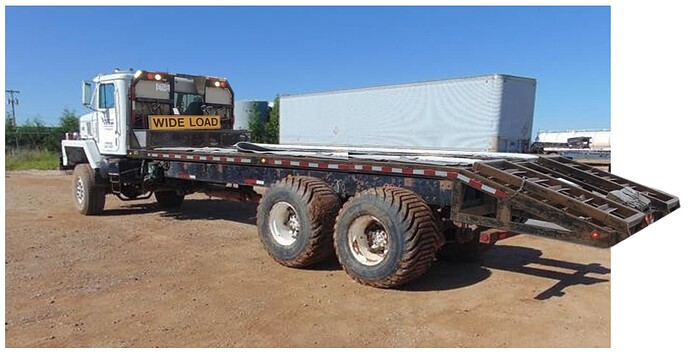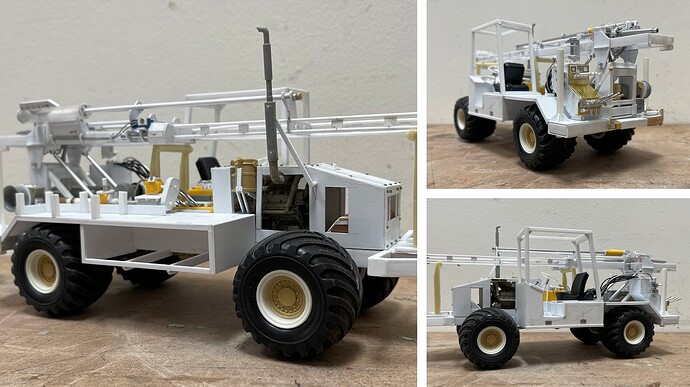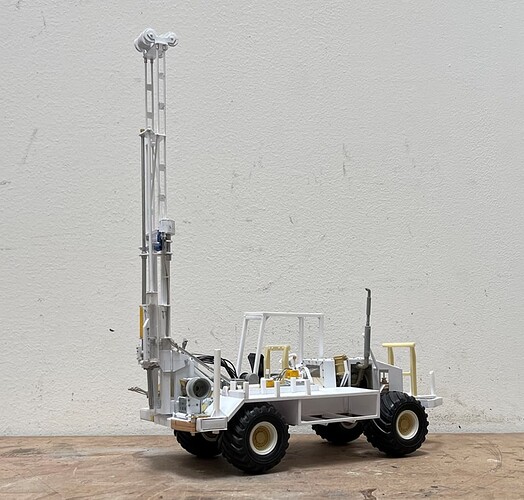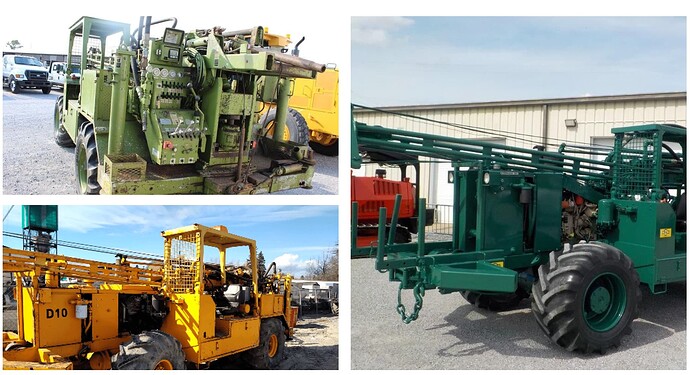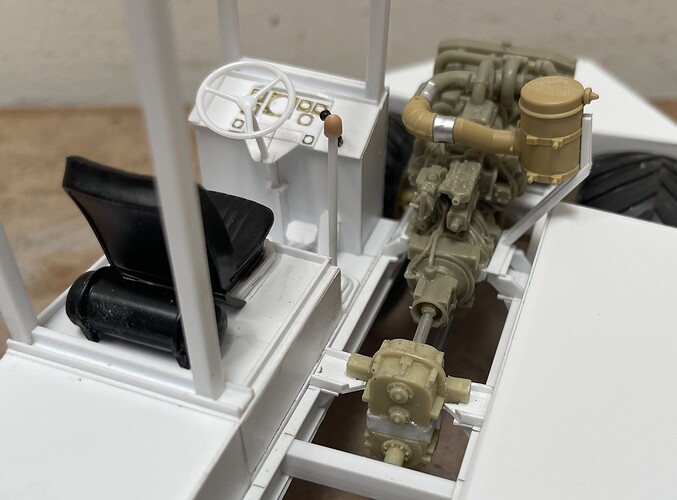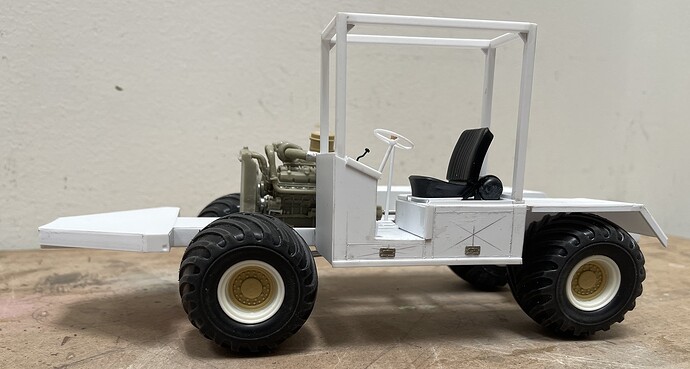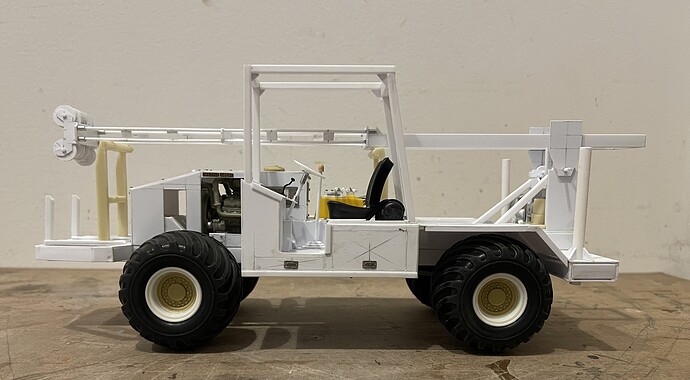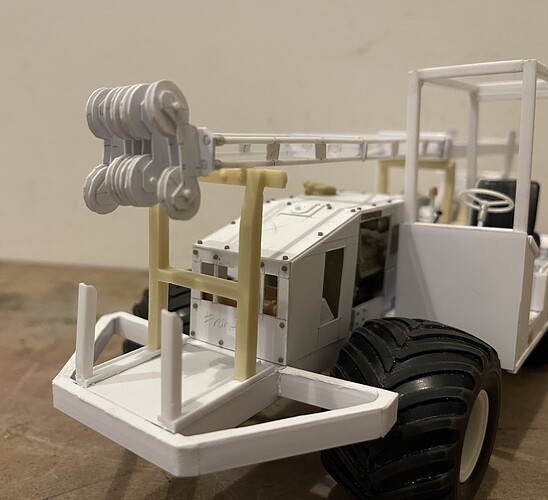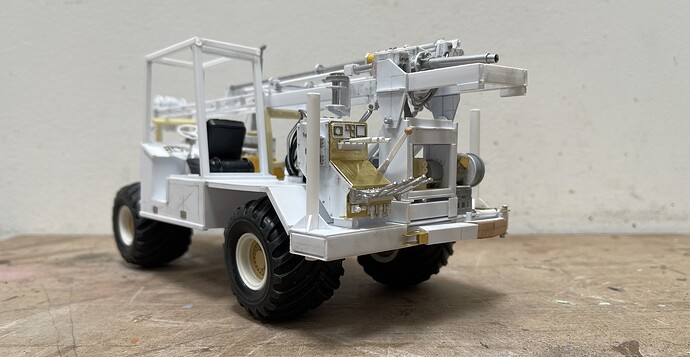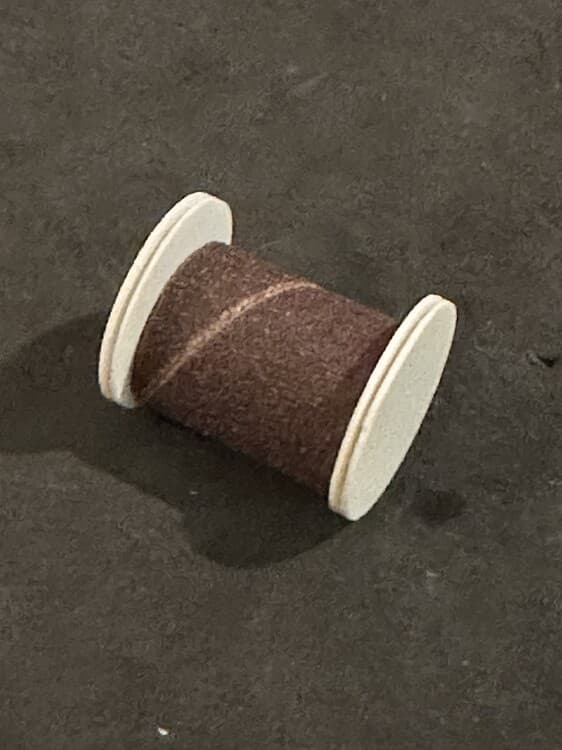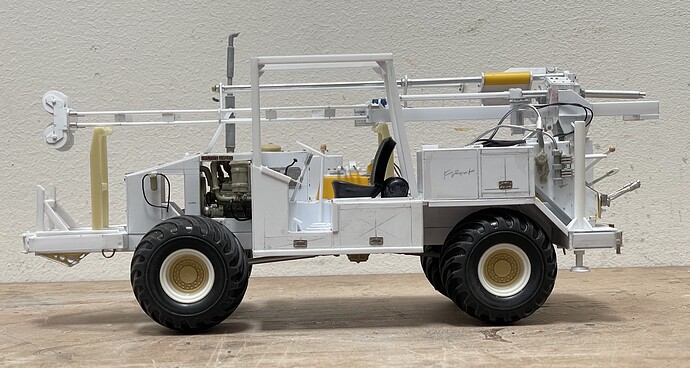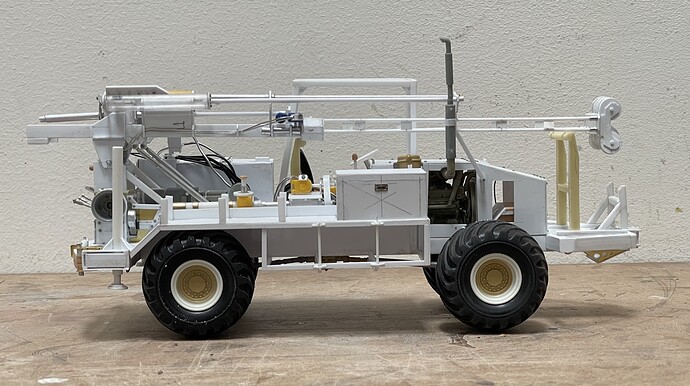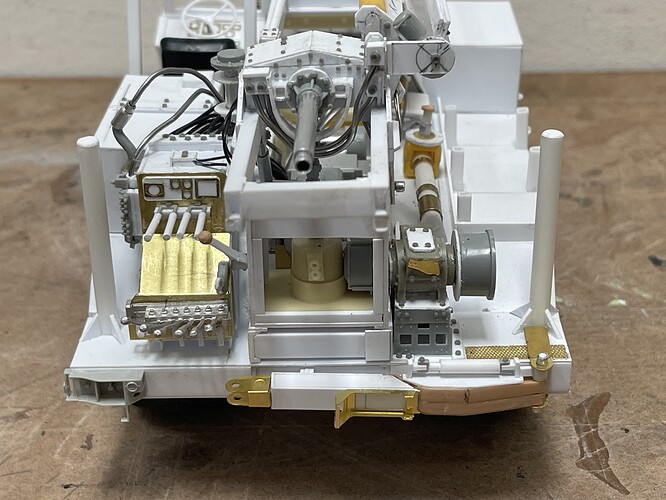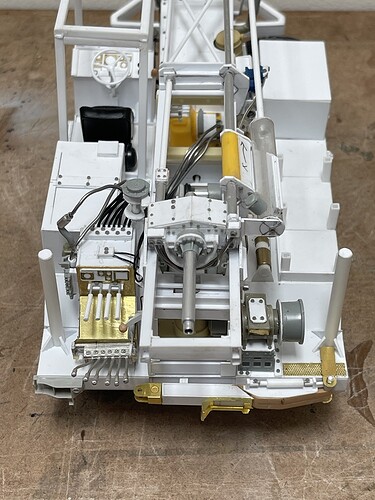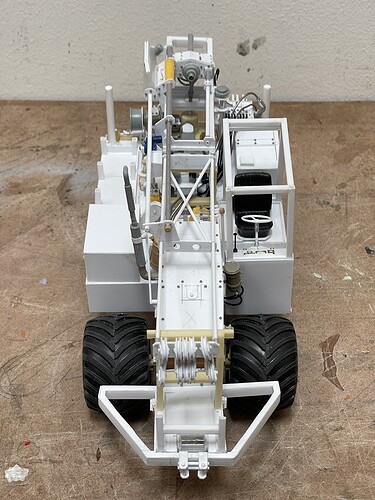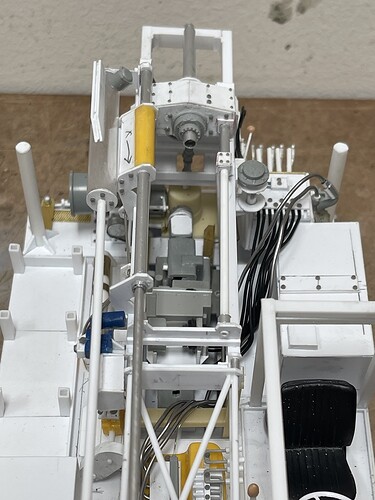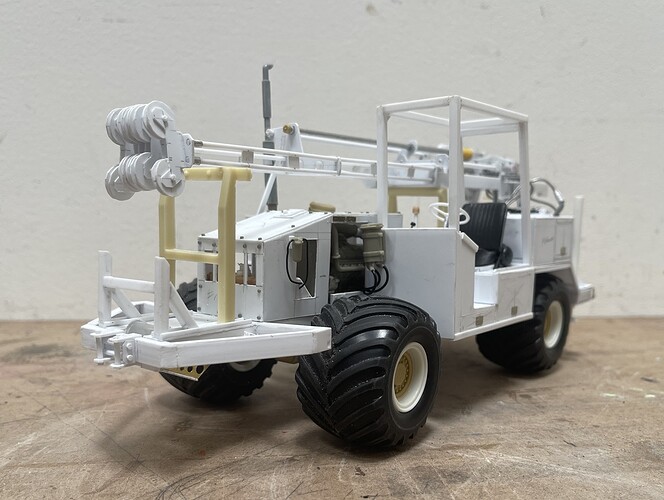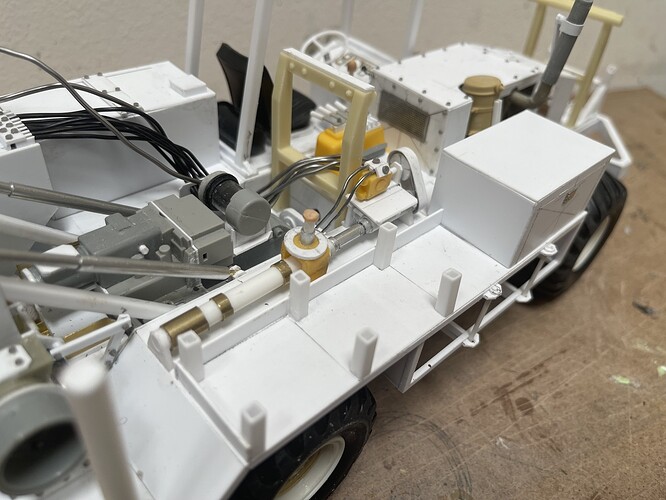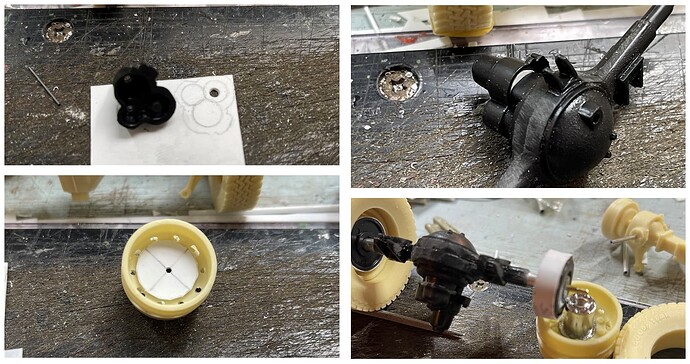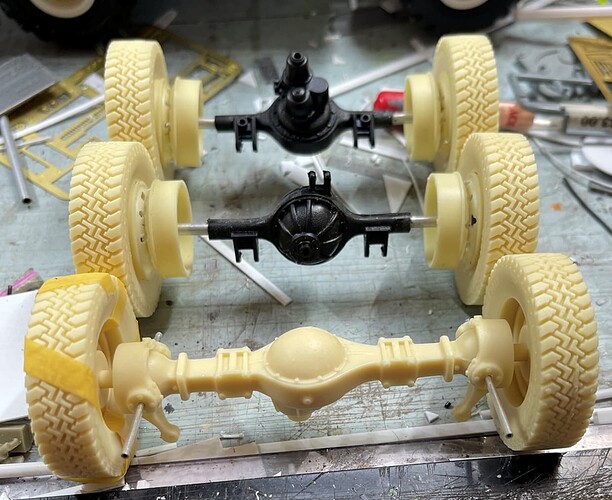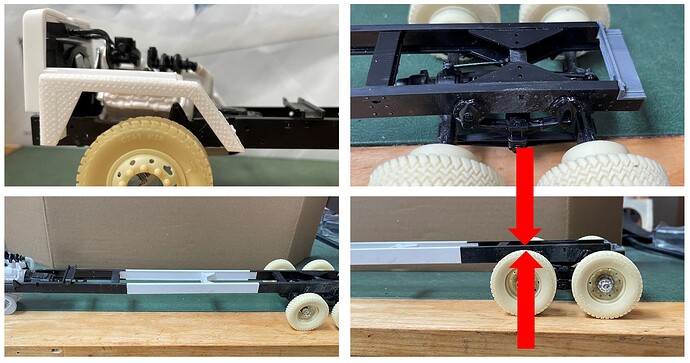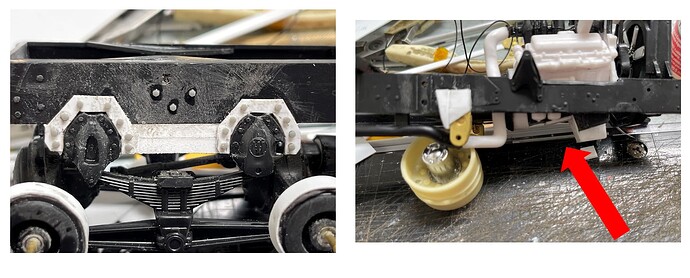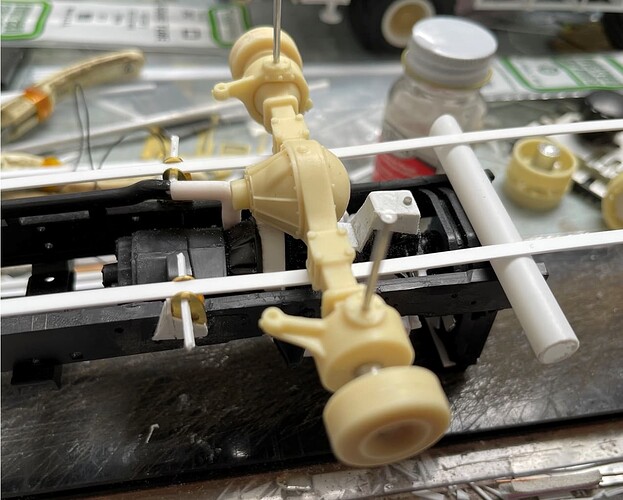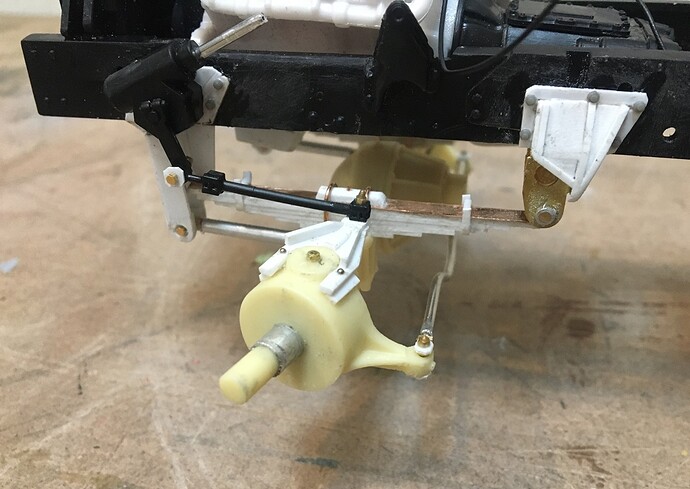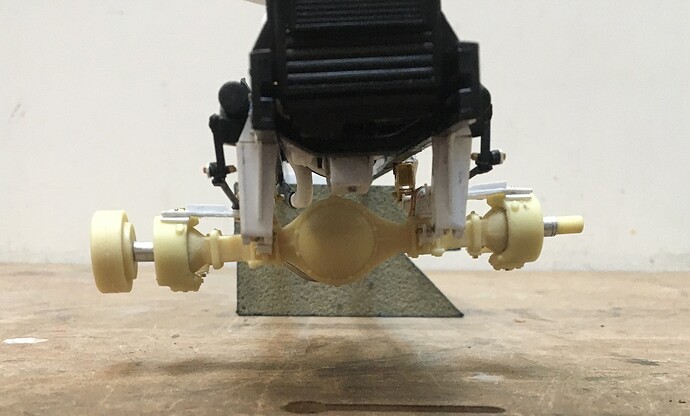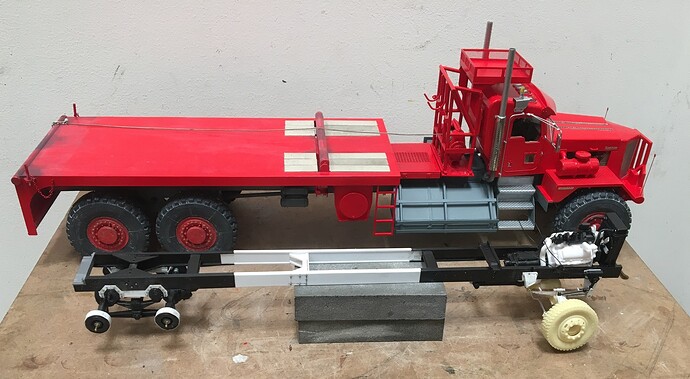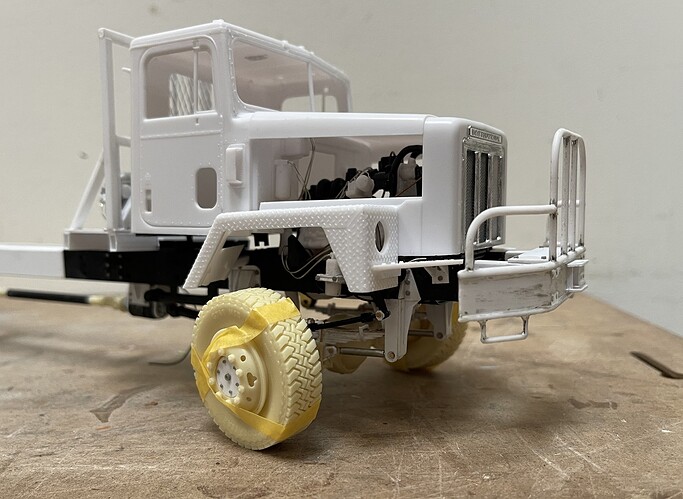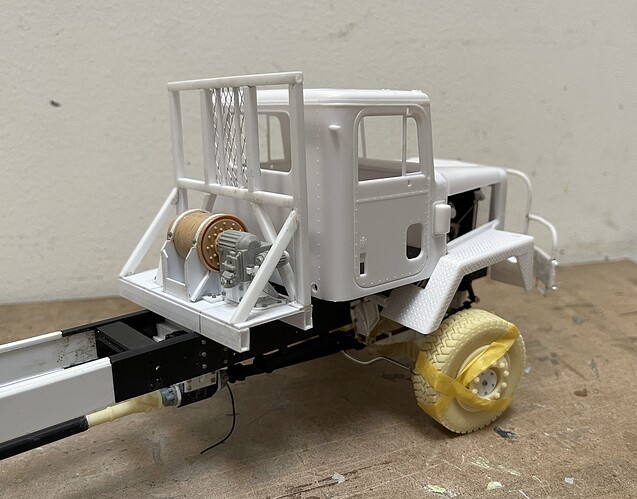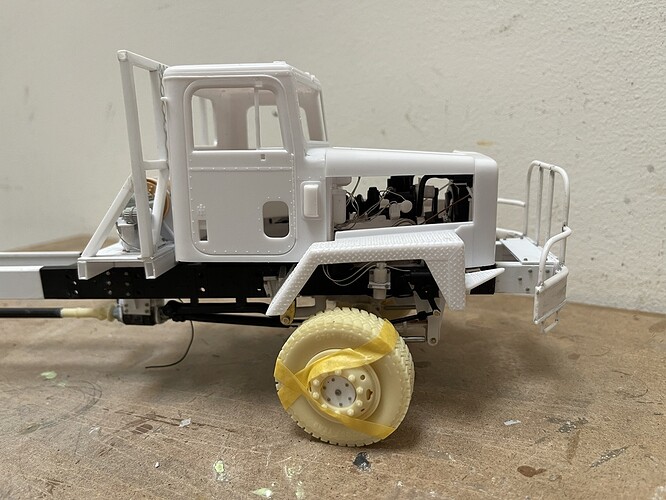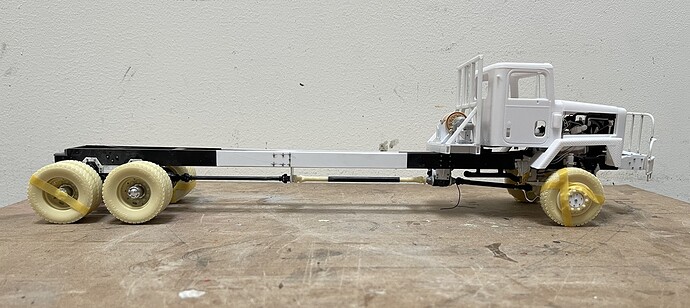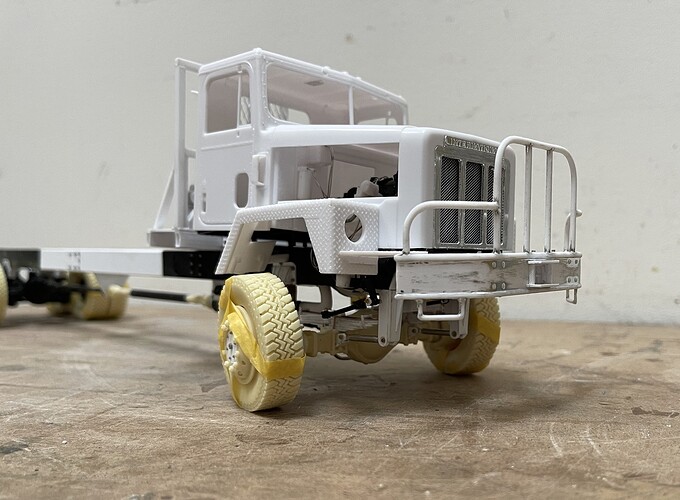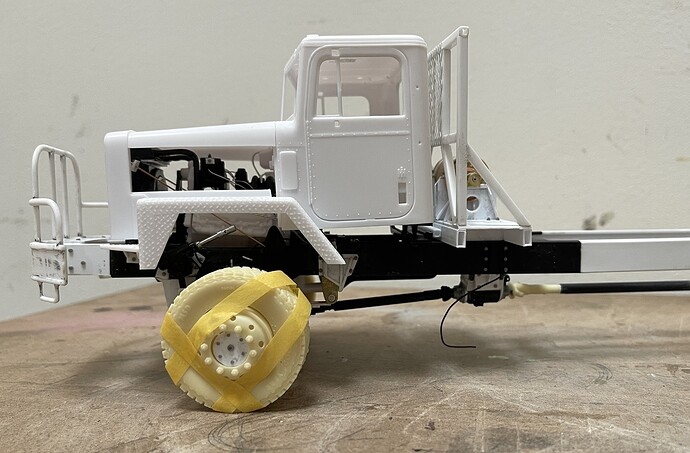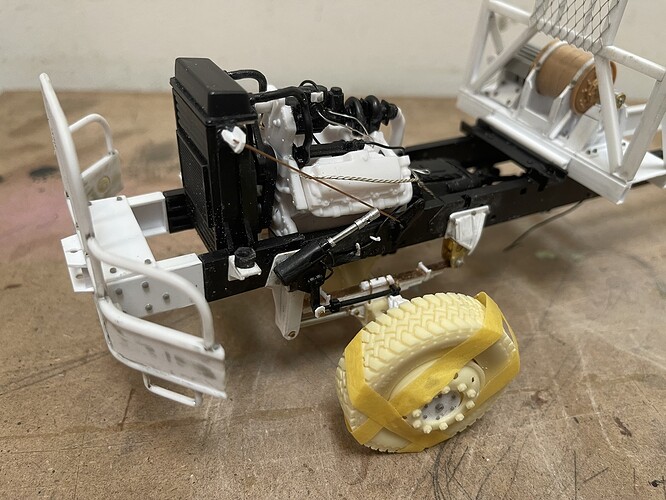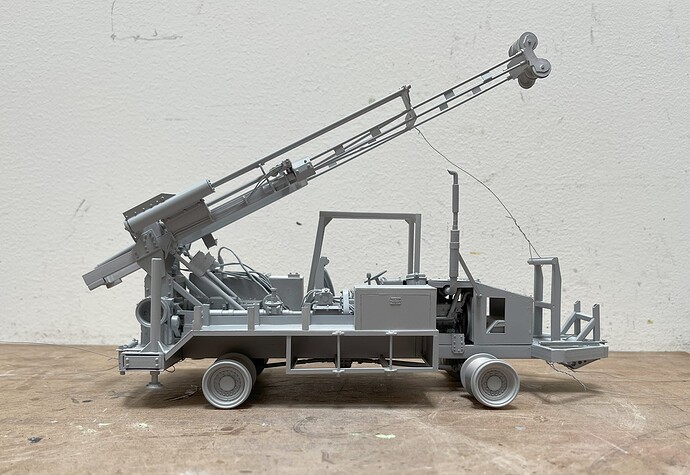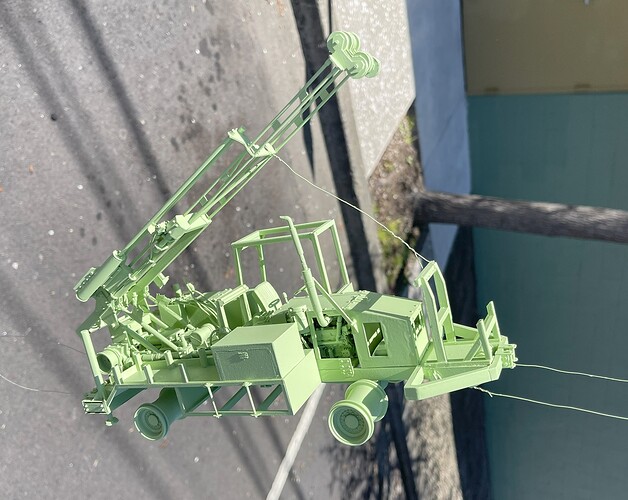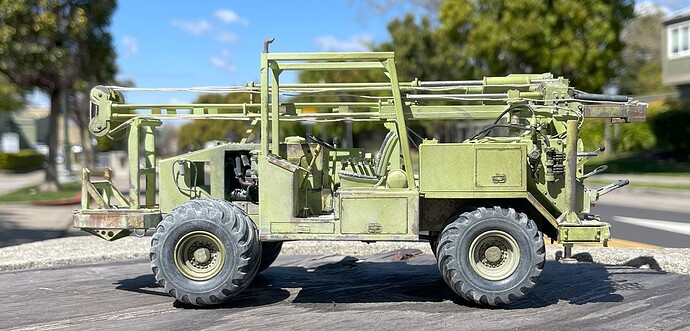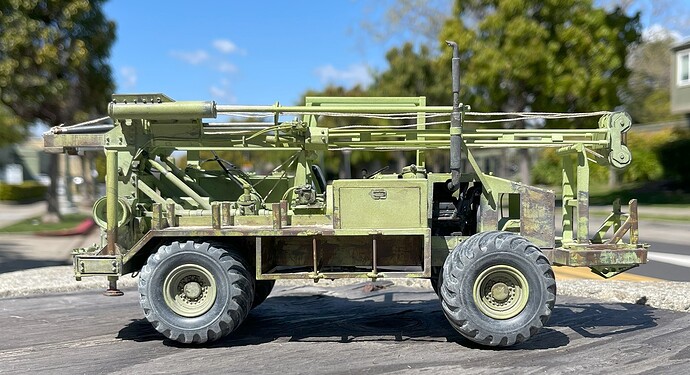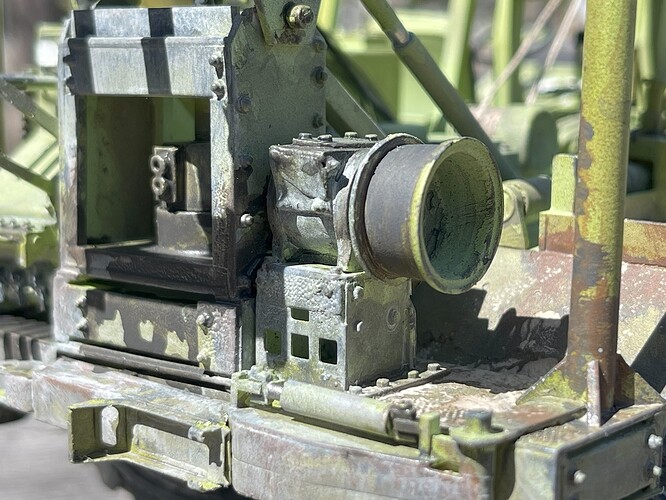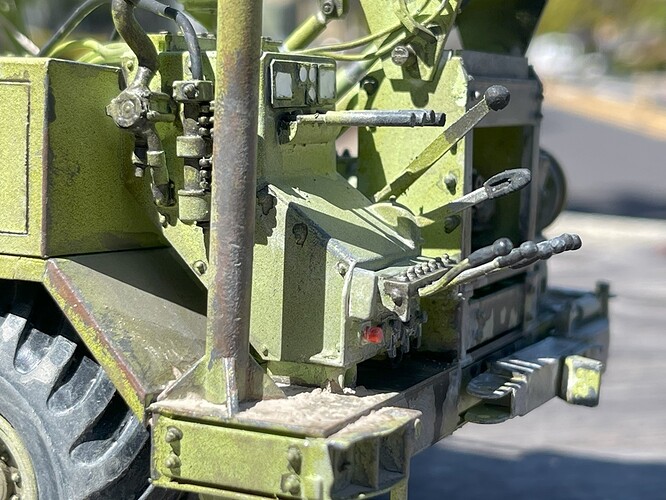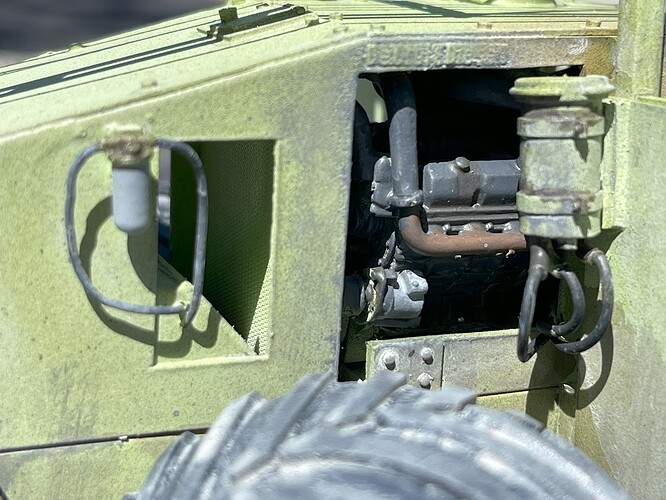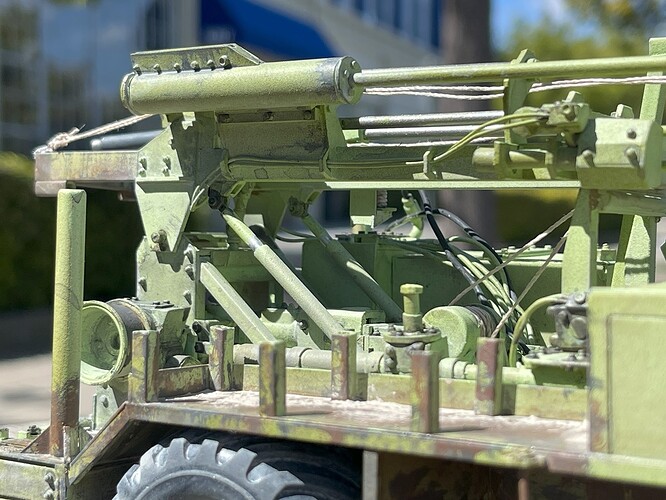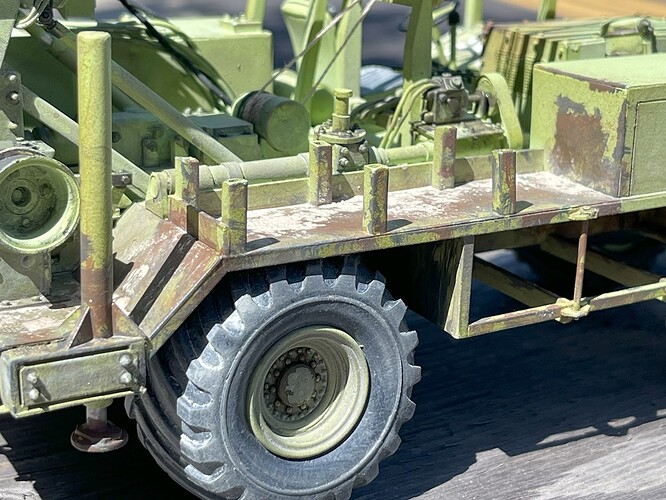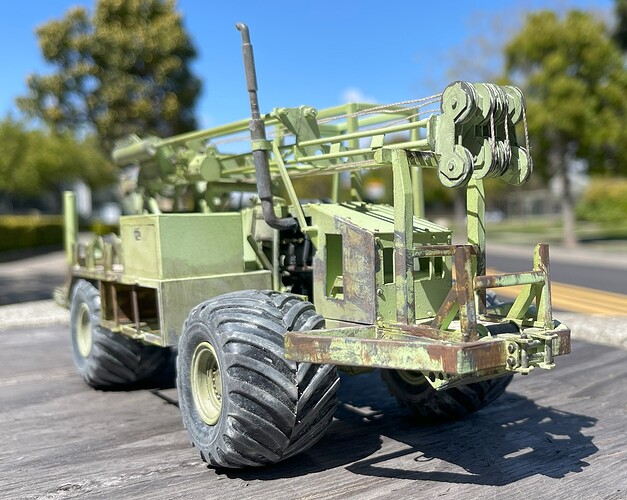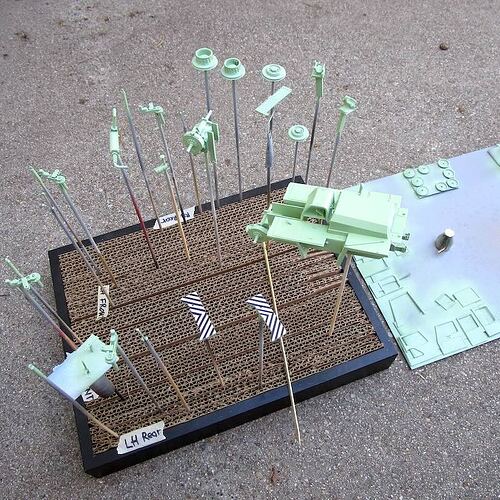Well guys, thanks for dropping in, and having some fun with me on this project -
@Panzer948 - ah ha! someone who actually knows how to use one of these!
I have seen them on job sites, and being carried on trucks or trailers, and thought it was unique and complex enough (as opposed to a load of lumber, other materials or whatever else) to add to the character of the truck.
As I mentioned above, this was not supposed to be (in my mind) all that elaborate of a build, as it will, or was intended to be ancillary to the truck - alas, that was an incorrect supposition! This has been a lot of work and a pretty challenging build. I can say with clarity that it is a reasonably close representation of the real thing, but nowhere near a replica. The goal was/is to make something that looks like a drill rig, rather than making a direct copy of a drill rig - the eyecrometer has been used extensively! 
With the aggressive tire tread pattern, I am assuming used for exploratory drilling in rough conditions, so I suppose Geotechnic, rather than use in generally developed areas?
I did not use a kit, and this is largely scratch built. I looked at several auction site images as references, so this is not based on plans or a particular vehicle, and instead what I could interpret from several, such as these:
These examples are what inspired the use of the tires I selected. Fortunately, I have a few sets of these tires collecting dust, so decided this would be the perfect use for one set!
Regarding the build itself, it’s largely scratch work:
Above the basic vehicle - somewhere I read these ran/run small Detroit Diesel engines, and I had a 1/35 Detroit engine kit, transfer case, and some left over heavy axles and driveshafts so in they went. I inserted solid brass rod through the axles to handle the weight of the tires and wheels.
Using these random parts created some problems, like making mounts for each - the axles are mounted on unique brackets built using reference pics. The front can (or could, as I glued it in place) rotate vertically in the center, while the rear has brackets that go where leaf springs would otherwise mount, and brackets were made for the engine and transfer case.
The gauges are PE bezels intended for use in 1/32 scale model aircraft. The steering wheel and seat are from 1/25 kits.
As this was being constructed from guess work, it came to my attention 
 that I made a few errors - specifically, the nose was too long and didn’t require a full deck, and the cab - well, the four legs of the roll cage (ROPS) should not be vertical, and the rear legs should tilt forward/inward, so out came the knife and saw!
that I made a few errors - specifically, the nose was too long and didn’t require a full deck, and the cab - well, the four legs of the roll cage (ROPS) should not be vertical, and the rear legs should tilt forward/inward, so out came the knife and saw!
Before getting to the changes, I made a sloping hood, which I like more than the flat one. In real life, it looks like the area I called a “hood” is actually an integrated fuel or hydraulic tank - but, I’m not changing it now.
As you can see above, the cab and front end was corrected
And various details added
And, those pulleys…ten of them! yes, they have since been sanded, and are now round! These were a PITA, maybe even more tedious than making the lattice frame on the mast! There are ten .040" thick styrene disks, cut with a knife for pulleys, and 20! slightly larger diameter disks cut from .020" sheet to make/define the pulley sheaves  this was an awful task!
this was an awful task!
1/35 parts are added where possible - mostly for hydraulic and engine parts, but also for the inner and outer wheel hubs. The 1/32 wheel hubs looked ridiculous - very toylike, so after some filing and making up adapters, these more convincing hubs were assembled. So, an evergreen and junk box special!
I’ve since added more, but haven’t taken any pictures yet.
Thanks again for having a look -
Cheers
Nick

